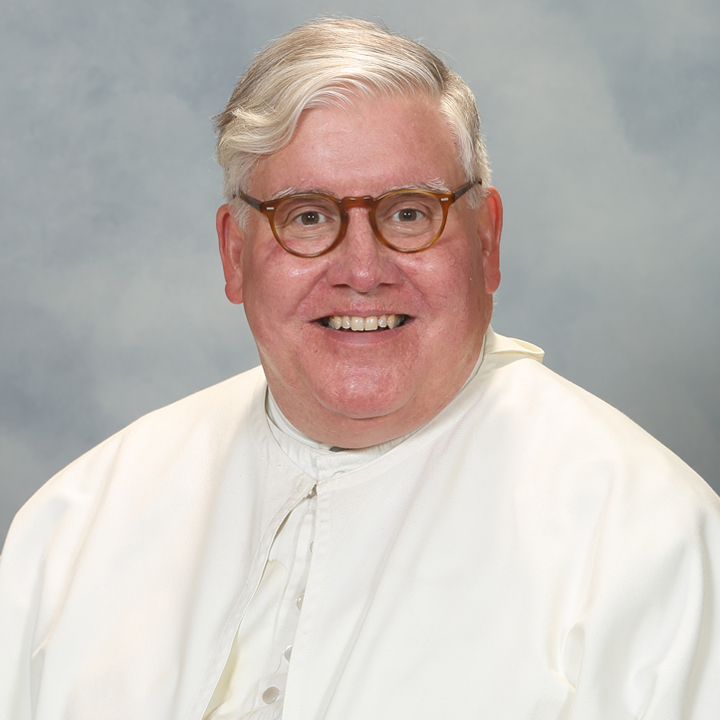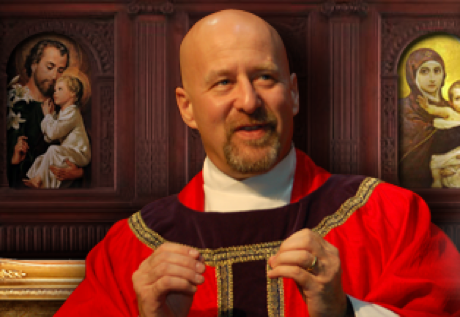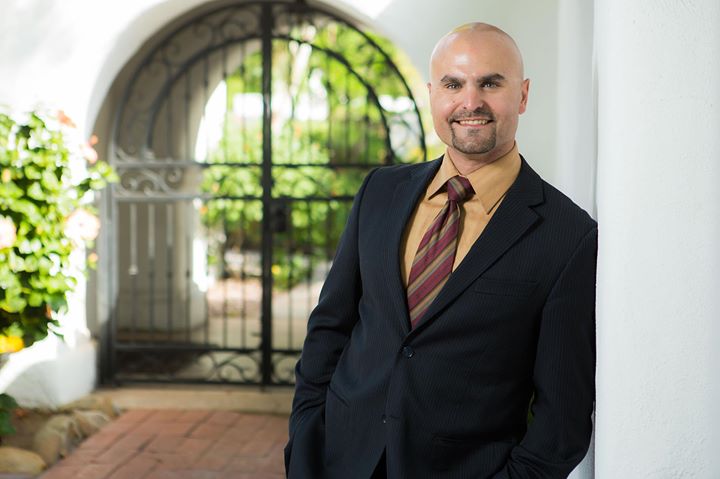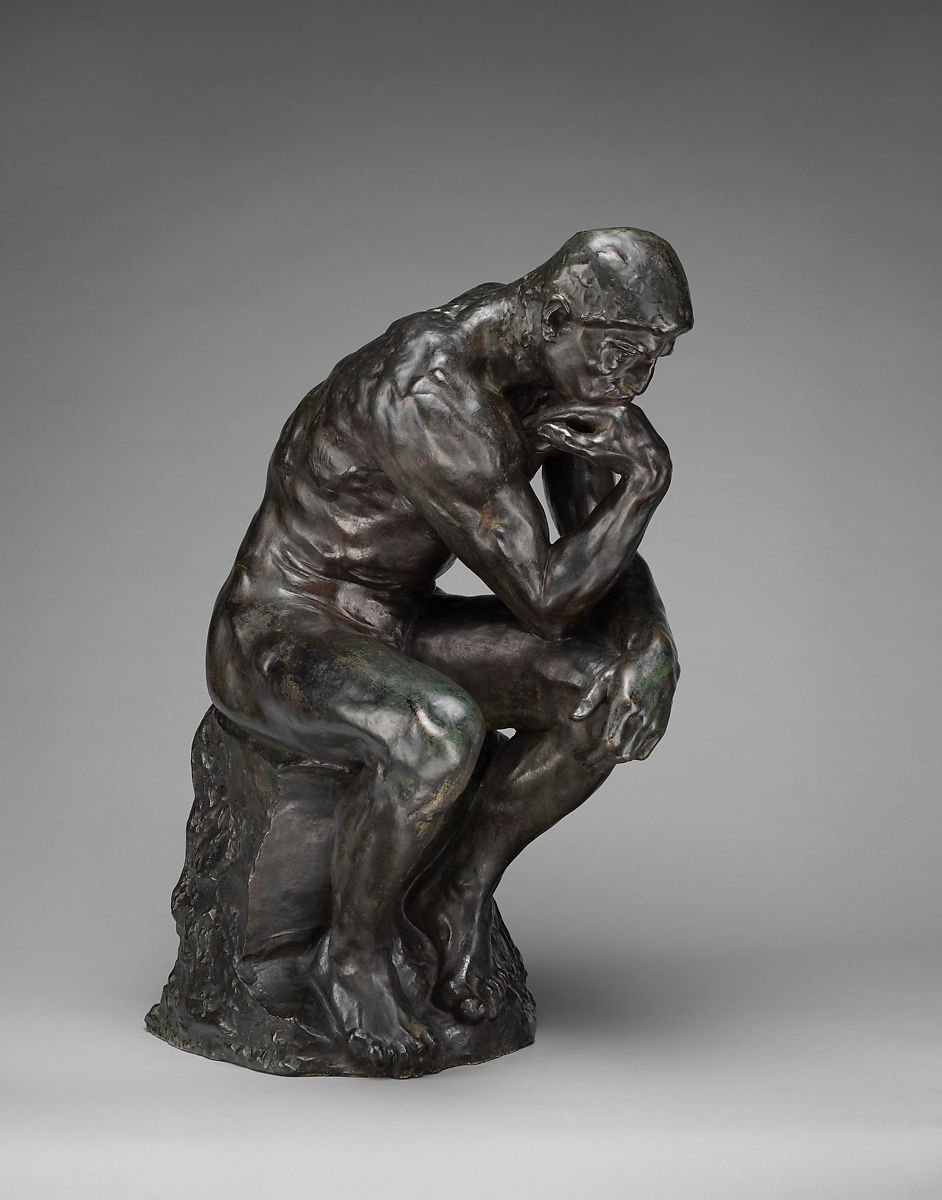
Many in our culture today understand Jesus as “Jesus, the kind and friendly 1st century version of Mr. Rogers; the warm and fuzzy nice guy who can give you a hug if your self esteem is low, but cannot conquer death.” If that is Jesus, why come to earth? Why be born? Why teach? Why proclaim the Good News? Why be tempted by the devil? Why put up with the goofball and sinful apostles? Why eat with sinners and tax collectors? Why piss off those who can have you killed? Why the agony in the garden? Why betrayal? Why the scourging at the pillar? Why the crown of thorns? Why carry the cross and fall? Why be stripped? (They crucified the condemned naked you know. This was to further the humiliation and suffering of the condemned and warning to others about Roman tyranny. Don’t believe all those nice strategically placed loin cloths. How about looking up in church at a truly naked man on the cross?) Why the agonizing death? Why the grief? Why the scandal? Why the suffering of his mother? Why the disillusionment? Why the fear? Why? Why? Why?
God is both merciful and just. And, His justice is a mercy to the offended.
“It would not be out of place at this point to recall the relationship between justice and mercy. These are not two contradictory realities, but two dimensions of a single reality that unfolds progressively until it culminates in the fullness of love.” -Pope Francis, Misericordiae Vultus, §20
“Will the saved rejoice in the sufferings of the damned?” – ST., Suppl., Q. 94
“The claim that indulgences are not part of Church teaching today is false. This is proved by the Catechism of the Catholic Church, which states, “An indulgence is obtained through the Church who, by virtue of the power of binding and loosing granted her by Christ Jesus, intervenes in favor of individual Christians and opens for them the treasury of the merits of Christ and the saints to obtain from the Father of mercies the remission of the temporal punishment due for their sins.” The Church does this not just to aid Christians, “but also to spur them to works of devotion, penance, and charity” (CCC 1478).
Indulgences are part of the Church’s infallible teaching. This means that no Catholic is at liberty to disbelieve in them. The Council of Trent stated that it “condemns with anathema those who say that indulgences are useless or that the Church does not have the power to grant them”(Trent, session 25, Decree on Indulgences). Trent’s anathema places indulgences in the realm of infallibly defined teaching.
The pious use of indulgences dates back into the early days of the Church, and the principles underlying indulgences extend back into the Bible itself. The principles behind indulgences are as clear in Scripture as those behind more familiar doctrines, such as the Trinity.
Before looking at those principles more closely, we should define indulgences. In his apostolic constitution on indulgences, Pope Paul VI said: “An indulgence is a remission before God of the temporal punishment due to sins whose guilt has already been forgiven, which the faithful Christian who is duly disposed gains under certain defined conditions through the Church’s help when, as a minister of redemption, she dispenses and applies with authority the treasury of the satisfactions won by Christ and the saints” (Indulgentiarum Doctrina 1).
This technical definition can be phrased more simply as, “An indulgence is what we receive when the Church lessens the temporal (lasting only for a short time) penalties to which we may be subject even though our sins have been forgiven.” To understand this definition, we need to look at the biblical principles behind indulgences.
Principle 1: Sin Results in Guilt and Punishment
When a person sins, he acquires certain liabilities: the liability of guilt and the liability of punishment. Scripture speaks of the former when it pictures guilt as clinging to our souls, making them discolored and unclean before God: “Though your sins are like scarlet, they shall be white as snow; though they are red like crimson, they shall become like wool” (Isa. 1:18).
We incur not just guilt, but liability for punishment when we sin: “I will punish the world for its evil, and the wicked for their iniquity; I will put an end to the pride of the arrogant and lay low the haughtiness of the ruthless” (Is. 13:11). Judgment pertains even to the smallest sins: “For God will bring every deed into judgment, with every secret thing, whether good or evil” (Eccl. 12:14).
Principle 2: Punishments are Both Temporal and Eternal
The Bible indicates some punishments are eternal, lasting forever, but others are temporal. Eternal punishment is mentioned in Daniel 12:2: “And many of those who sleep in the dust of the earth shall awake, some to everlasting life and some to shame and everlasting contempt.”
We normally focus on the eternal penalties of sin, because they are the most important, but Scripture indicates that temporal penalties are real and go back to the first sin humans committed: “To the woman he said, ‘I will greatly multiply your pain in childbearing; in pain you shall bring forth children” (Gen. 3:16).
Principle 3: Temporal Penalties May Remain When a Sin is Forgiven
When someone repents, God removes his guilt (Isa. 1:18) and any eternal punishment (Rom. 5:9), but temporal penalties may remain. One passage demonstrating this is 2 Samuel 12, in which Nathan the prophet confronts David over his adultery:
“Then David said to Nathan, ‘I have sinned against the Lord.’ Nathan answered David: ‘The Lord on his part has forgiven your sin; you shall not die. But since you have utterly spurned the Lord by this deed, the child born to you must surely die’” (2 Sam. 12:13-14). God forgave David but David still had to suffer the loss of his son as well as other temporal punishments (2 Sam. 12:7-12).
Protestants realize that, although Jesus paid the price for our sins before God, he did not relieve our obligation to repair what we have done. They acknowledge that if you steal someone’s car, you have to give it back; it isn’t enough just to repent.
Protestants also admit the principle of temporal penalties for sin, in practice, when discussing death. Scripture says death entered the world through original sin (Gen. 3:22-24; Rom. 5:12). When we first come to God we are forgiven, and when we sin later we are able to be forgiven, yet that does not free us from the penalty of physical death. Even the forgiven die; a penalty remains after our sins are forgiven. This is a temporal penalty since physical death is temporary and we will be resurrected (Dan. 12:2).
Principle 4: God Blesses Some People as a Reward to Others
In Matthew 9:1-8, Jesus heals a paralytic and forgives his sins after seeing the faith of his friends. Paul also tells us that “as regards election [the Jews] are beloved for the sake of their forefathers” (Rom. 11:28).
When God blesses one person as a reward to someone else, sometimes the specific blessing he gives is a reduction of the temporal penalties to which the first person is subject. For example, God promised Abraham that, if he could find a certain number of righteous men in Sodom, he was willing to defer the city’s temporal destruction for the sake of the righteous (Gen. 18:16-33).
Principle 5: God Remits Temporal Punishments through the Church
God uses the Church when he removes temporal penalties. This is the essence of the doctrine of indulgences. Earlier we defined indulgences as “what we receive when the Church lessens the temporal penalties to which we may be subject even though our sins have been forgiven.” The members of the Church became aware of this principle through the sacrament of penance. From the beginning, acts of penance were assigned as part of the sacrament because the Church recognized that Christians must deal with temporal penalties, such as God’s discipline and the need to compensate those our sins have injured.
In the early Church, penances were sometimes severe. But the Church recognized that repentant sinners could shorten their penances by pleasing God through pious or charitable acts that expressed sorrow and a desire to make up for one’s sin.
The Church also recognized the duration of temporal punishments could be lessened through the involvement of other persons who had pleased God. Scripture tells us God gave the authority to forgive sins “to men” (Matt. 9:8) and to Christ’s ministers in particular. Jesus told them, “As the Father has sent me, even so I send you. . . . Receive the Holy Spirit. If you forgive the sins of any, they are forgiven; if you retain the sins of any, they are retained” (John 20:21-23).
Christ also promised his Church the power to bind and loose on earth, saying, “Truly, I say to you, whatever you bind on earth shall be bound in heaven, and whatever you loose on earth shall be loosed in heaven” (Matt. 18:18). As the context makes clear, binding and loosing cover Church discipline, and Church discipline involves administering and removing temporal penalties (such as barring from and readmitting to the sacraments).
Principle 6: God Blesses Dead Christians as a Reward to Living Christians
From the beginning the Church recognized the validity of praying for the dead so that their transition into heaven (via purgatory) might be swift and smooth. This meant praying for the lessening or removal of temporal penalties holding them back from the full glory of heaven. For this reason the Church teaches that “indulgences can always be applied to the dead by way of prayer” (Indulgentarium Doctrina 3).
The custom of praying for the dead is not restricted to the Catholic faith. In the Old Testament, Judah Maccabee finds the bodies of soldiers who died wearing superstitious amulets during one of the Lord’s battles. Judah and his men “turned to prayer, beseeching that the sin which had been committed might be wholly blotted out” (2 Macc. 12:42). Judah also “took up a collection, man by man, to the amount of two thousand drachmas of silver and sent it to Jerusalem to provide for a sin offering. In doing this . . . he made atonement for the dead, that they might be delivered from their sin” (2 Macc. 12:43, 46).
Thus, Judah not only prayed for the dead, but provided for them the then-appropriate ecclesial action for lessening temporal penalties: a sin offering. Accordingly, we may take the now-appropriate ecclesial action for lessening temporal penalties— indulgences—and apply them to the dead by way of prayer.
These six principles, which we have seen to be thoroughly biblical, are the underpinnings of indulgences. But, the question of expiation often remains. Can we expiate our sins—and what does “expiate” mean anyway?
Some criticize indulgences by saying they involve our making “expiation” for our sins, something that only Christ can do. This criticism is unfounded, and most who make it do not know what the word “expiation” means or how indulgences work.
Protestant Scripture scholar Leon Morris comments on the confusion around the word “expiate”: “[M]ost of us . . . don’t understand ‘expiation’ very well. . . . [E]xpiation is . . . making amends for a wrong.” (The Atonement [Downers Grove: InterVarsity, 1983], 151). The Wycliff Bible Encyclopedia gives a similar definition: “The basic idea of expiation has to do with reparation for a wrong, the satisfaction of the demands of justice through paying a penalty.”
Certainly when it comes to the eternal effects of our sins, only Christ can make amends or reparation. We are completely unable to do so, not only because we are finite creatures incapable of making an infinite satisfaction, but because everything we have was given to us by God. For us to try to satisfy God’s eternal justice would be like using money we had borrowed from someone to repay what we had stolen from him. This does not mean we can’t make amends or reparation for the temporal effects of our sins. If someone steals an item, he can return it. If someone damages another’s reputation, he can publicly correct the slander. These are ways in which one can make at least partial amends (expiation) for what he has done.
An excellent biblical illustration of this principle is given in Proverbs 16:6, which states: “By loving kindness and faithfulness iniquity is atoned for, and by the fear of the Lord a man avoids evil” (cf. Lev. 6:1-7; Num. 5:5-8). Here we are told that a person makes temporal atonement (though never eternal atonement, of which only Christ is capable) for his sins through acts of loving kindness and faithfulness.
NIHIL OBSTAT: I have concluded that the materials
presented in this work are free of doctrinal or moral errors.
Bernadeane Carr, STL, Censor Librorum, August 10, 2004
IMPRIMATUR: In accord with 1983 CIC 827
permission to publish this work is hereby granted.
+Robert H. Brom, Bishop of San Diego, August 10, 2004″
https://www.catholic.com/tract/primer-on-indulgences
Love & His mercy,
Matthew














